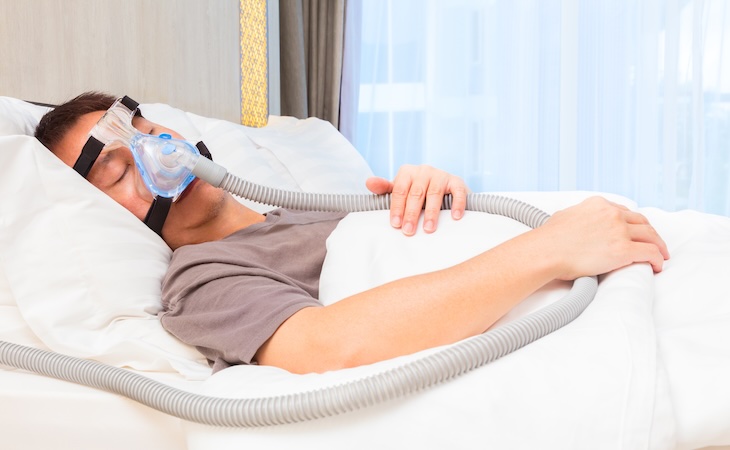By now we know that while some cases of COVID-19 are mild and short-lived, others are not. In fact, the term “COVID long-haulers” has become familiar vernacular, explaining symptoms such as brain fog, dizziness, fatigue, headaches, and shortness of breath that persist long after the initial COVID-19 infection.
Long COVID, as it’s often called, impacts some 10% to 30% of people who get infected with the coronavirus, some research finds. One of its main symptoms is a tough one to battle day-in and day-out: chronic exhaustion.
Researchers are still studying long COVID and its symptoms to figure out what causes it, who gets it, and—most importantly—how to recover.
One of the best ways to avoid it is to reduce your risk of contracting a serious case of COVID-19, to begin with—and that’s through vaccination. One study published in The Lancet found that two vaccine doses lowered the risk of having symptoms post-infection by half.
As for what else we know? Here are just some of the discoveries that have come out of a few years’ worth of research on the topic.
What causes post-COVID fatigue?
The short answer: Even though fatigue seems to be the most common symptom among people with long COVID, we don’t know what causes it, says Vivek Cherian, MD, a Chicago-based internal medicine physician.
Research does, however, suggest a constellation of factors that can increase the risk of long COVID, as outlined in a recent New York Times (NYT) feature: a high level of viral RNA early on in the infection, the presence of specific autoantibodies, a reactivation of the Epstein-Barr virus (which causes mononucleosis), and a diagnosis of type 2 diabetes.
People with long COVID also seem to have “disrupted immune systems,” as the NYT article points out, leading researchers and scientists to suspect that chronic immune dysfunction can set off a “chain of symptoms throughout the body.”
Of course, this doesn’t explain everything. “Even individuals who are young and had relatively mild courses have developed long COVID symptoms,” confirms Cherian.
While we now know that COVID-19 can have long-term effects on the brain, we still don’t know the exact mechanism, adds Cherian. “There have been some studies that demonstrated that the SARS-CoV-2 virus [which causes COVID-19] can lead to loss of gray matter, but we still need more time for a definitive cause,” he says.
Jacob Teitelbaum, MD, a physician who specializes in integrative medicine, pain, and chronic fatigue syndrome, says that post-viral chronic fatigue is a common problem caused by numerous viruses. “Certain viruses can trip an almond-sized circuit breaker in the brain called the hypothalamus,” he says, leading to a whole slew of symptoms from fatigue and insomnia to widespread hormonal deficiencies despite normal testing.
There is a lot of overlap in the exhaustion of long COVID and other conditions too, including myalgic encephalomyelitis/chronic fatigue syndrome (ME/CFS), a complex disease categorized by “overwhelming fatigue that is not improved by rest.”
To this extent, some researchers point out that long COVID isn’t just one disease. Christina Pagel, director of the Clinical Operational Research Unit at University College London, for example, told NPR, “it’s looking like what has been grouped together as ‘long COVID’ is actually two or three different groups of disorders.”
In short: There’s still a lot to be learned. “The virus that causes COVID-19 was identified only in December 2019 which is still quite recent,” says Cherian. “It is going to take time to learn more details as to how the virus affects people in different ways and who are more predisposed to developing long COVID symptoms including post-COVID fatigue.”
How long does fatigue last after COVID?
Fatigue is common after all viral infections, COVID included. Usually, it evens out after about two or three weeks. In long COVID? It lingers.
Most of the research on the timeline of long COVID has focused on people who have been hospitalized and is limited to 30 to 90 days post-infection, noting some lingering symptoms throughout this timeline.
But some studies find that north of 60% of people has at least one COVID-related symptom six months after getting sick initially. One recent study published in JAMA also found that nine months after falling ill, about 30% of people were still experiencing symptoms.
“Some individuals after recovering from COVID-19 will have absolutely no symptoms at all whereas other individuals can have symptoms that last anywhere from weeks to six months after initially testing positive for the virus,” says Cherian.
Symptoms of long COVID can be frustrating and persistent. But Cherian also says that “oftentimes patients do get better over time, particularly with symptoms such as fatigue.”
The timeline of long COVID, as is true for its symptoms and who it impacts, varies.
How do you treat long COVID fatigue?
It’s a challenging question that the medical and scientific communities are currently grappling with. “Unfortunately, most physicians have no training in how to address long haulers or post-COVID symptoms,” says Teitelbaum.
That said, if you’re currently managing symptoms, some strategies can help, including the below options that both research and experts alike point people toward.
See your doctor
If you feel like your fatigue is getting worse and not better, if you’ve been having symptoms for more than a month that don’t seem to be improving, or if you’re worried or have new symptoms, it’s time to see your doctor.
“They can take a full history and start referring you to specialists if needed,” says Cherian. “Treatment for long COVID requires a multi-disciplinary approach from different specialties such as cardiology, pulmonology, as well as rehabilitation services.” Your doctor can work with you on an individualized plan that is best for you.
Seek support
Feel like you have few answers as to what’s going on with your body and what you should do? You also might feel as though you’re experience isn’t valid—especially because, unlike physical symptoms, post-COVID fatigue isn’t visible. But it’s important to remember that fatigue is a very real and debilitating condition.
“Group therapy and support programs can be helpful,” says Cherian. There are even specific support groups for long COVID. You might find validation and support via these resources. Sometimes, mental health conditions such as anxiety and depression occur in tandem with fatigue, and therapy can help you feel better.
Look at your lifestyle
There are a lot of different factors that contribute to and prolong fatigue: a lack of exercise, lack of (or disturbance of) a daily routine, irregular sleep patterns, stressful jobs, caregiving responsibilities—the list goes on.
Research Teitelbaum has published suggests that optimizing sleep, hormones, immunity, nutrition, and exercise as you’re best able to has been linked with a 90% increase in quality of life.
Some of these factors might feel (and likely are) outside of your control. But try honing in on what you can change—your bedtime routine, for example.
Ensuring you’re getting adequate sleep gives your body a chance to rest and work toward healing itself, says Cherian. He specifically calls out physical activity too, suggesting to aim for close to 30 minutes a day (if you don’t have exercise-induced fatigue).
“There is a fair amount of data that supports exercise improves our overall brain health,” he says.
Learn more about the most common reasons why you might be waking up tired in the morning.




